Read my complete guide on how to make homemade cauliflower rice - 4 different ways, with and without a food processor. Included are some tasty variations for how to use this low-carb rice substitute.
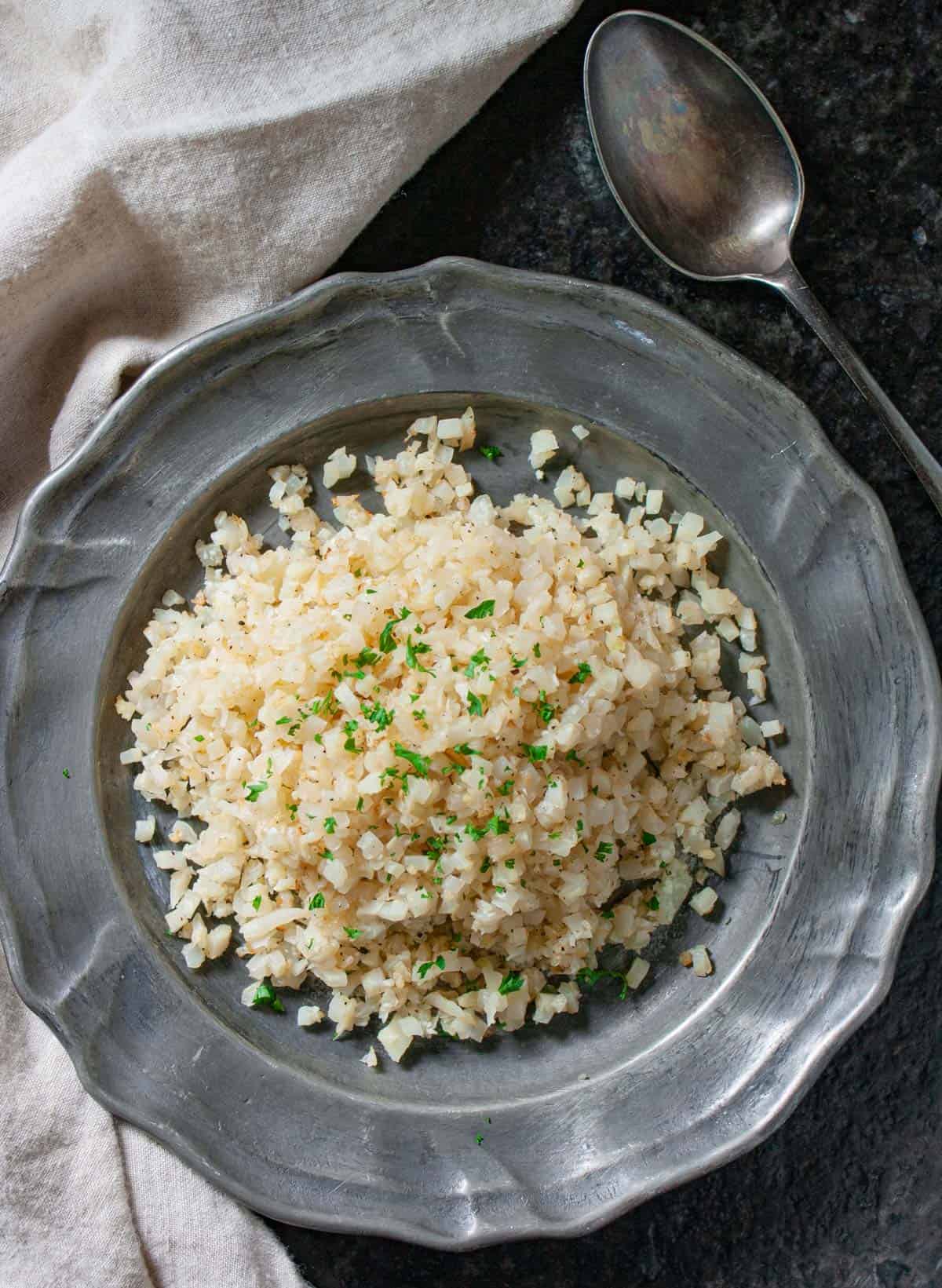
Jump to:
- Why you'll love this recipe
- What is cauliflower rice?
- Is cauliflower good for you?
- Is cauliflower keto friendly?
- Is cauliflower low-FODMAP?
- What does it taste like?
- Can I buy it pre-made?
- How much cauliflower rice in a head?
- Instructions
- How to cook from fresh
- How long to cook
- How long does cauliflower rice last in the fridge?
- Can you freeze it?
- How to freeze
- How to cook frozen cauliflower rice
- Variations
- Homemade spice blends to make great seasoned cauliflower rice
- FAQ
- Recipes to serve with riced cauliflower
- 📖 Recipe
- 💬 Comments
Learn 4 ways to make a homemade low-carb alternative to rice from a whole head of cauliflower: in the food processor, with a knife, a grater and a blender. This is an easy, complete 'how-to' deep-dive, similar to my How to Shred Cabbage guide. We’ll start with the basics and then move on to detailed instructions.
Whether you’re looking for vegetarian, low-carb keto recipes, or just a simple side dish, this simple, basic recipe has you covered. Riced cauliflower can be used like regular rice for bowl meals, burritos, as a seasoned side and so much more. It also makes a great gluten-free couscous substitute.
Why you'll love this recipe
- Delicious side dish – this recipe makes a great side dish for holiday celebrations, potlucks, or easy weeknight meals
- Make-ahead and batch cooking – plan ahead for the week’s meal prep. Nutritious and tasty weekday lunches and dinners are a cinch.
- Economical – save money by making your own. Store bought pre-made riced cauliflower costs much more per ounce than a whole raw head.
- Special diet friendly – this makes a great rice substitute for low-carb keto diets and fits perfectly with paleo, AIP, Whole30 and most clean-eating diets
What is cauliflower rice?
This is a grain-free rice alternative that is made entirely from cauliflower. It’s simply grated (or processed) into rice-sized bits, creating faux rice.
Is cauliflower good for you?
There are a number of health benefits to eating cauliflower. It's low in calories and carbs, making it a perfect whole food alternative to traditional rice.
The fiber in cauliflower is a pre-biotic, meaning it helps to feed healthy bacteria in your gut, promoting digestive health and reducing inflammation.
It contains many nutrients and is a good source of vitamin C, folate, pantothenic acid, Vitamin B6, choline, manganese, potassium and antioxidants.
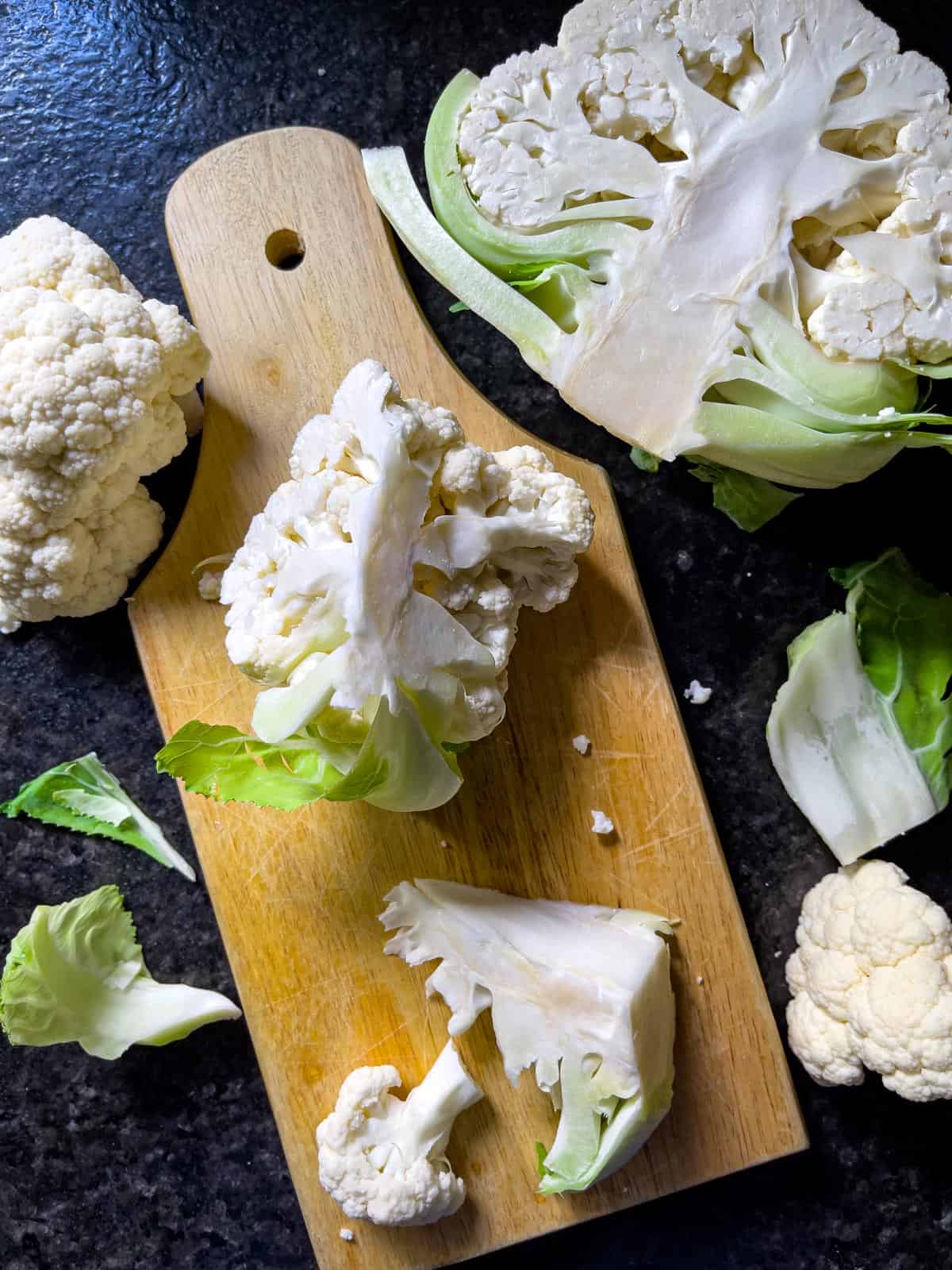
Is cauliflower keto friendly?
Yes! This is one of my favorite keto rice alternatives. One cup contains about 96 calories and 4g net carbs. It’s a perfect addition to a low-carb or keto diet.
Is cauliflower low-FODMAP?
Sorry, my friends, but no. It is considered a high-FODMAP vegetable in any serving size.
What does it taste like?
Funny enough, to me, it does taste a little like rice. It has a very delicate, cabbage-like flavor, but develops a nutty taste when sautéed, making it a great base or side dish. Cauliflower also tends to absorb the flavors it's seasoned with.
Can I buy it pre-made?
Yes - you can find packages available frozen. It is also available in shelf stable packs, pre-cooked and in microwaveable pouches.
I find that when freshly riced, it has more flavor and is less soggy than some frozen, store-bought varieties. And, preservatives used in some shelf-stable products tend to leave an aftertaste.
How much cauliflower rice in a head?
Heads vary in size and can range from 1.5-3 pounds.
- A medium head will produce about 1 pound, or 4 cups
- Large heads will produce around 1.5 pounds, or 5-6 cups
- Extra large heads will give you about 2 pounds riced, or 7-8 cups
Instructions
There are a few easy methods for making your own at home: using a food processor, a box grater, in a blender, or using a knife. Don't have a food processor? No worries - each method is so easy. If you're interested, I use this Cuisinart food processor, and I think its the best ever.
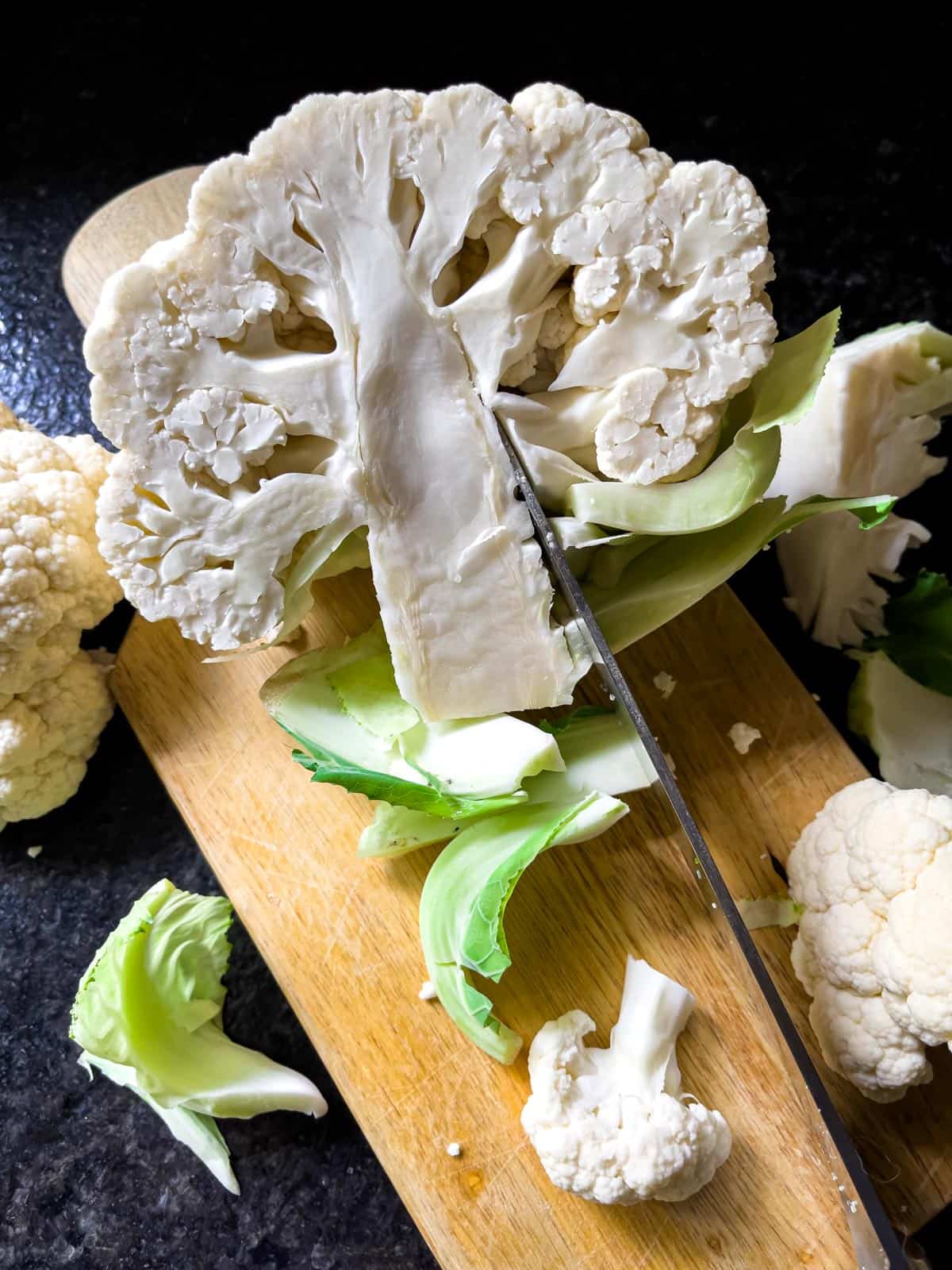
Preparing your head of cauliflower
- Wash and trim the head. Trim off any brown spots from the florets and outer leaf stems.
- Cut the head in half
- Cut out the woody center. Alternatively, you can cut the head into quarters and then cut out the center.
- Cut large florets into smaller pieces if you're using a food processor or blender
Using a food processor
This is actually my preferred method. Within minutes, you can rice an entire head.
There are two methods using your food processor: With the S blade or with the grater attachment. Either will yield great results.
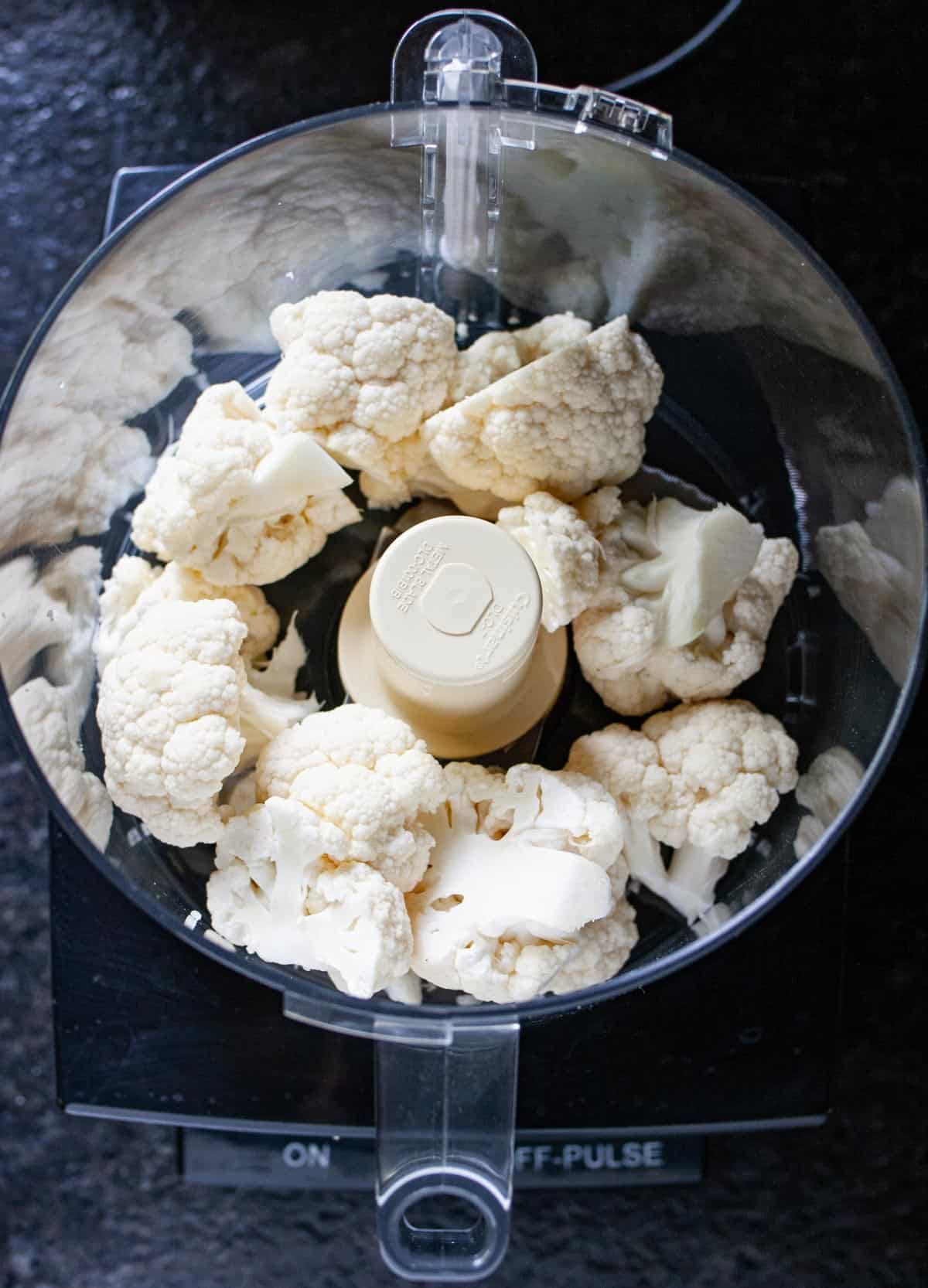
Using the S blade
- Place the prepared florets in the food processor
- Pulse until it is chopped into fine pieces
TIP: Sometimes pieces will be chopped very fine, while others are still too large. It’s best to add chopped florets to your food processor bowl in small amounts and work in batches. The grater attachment will yield more uniform ‘grains’, where the S blade will often produce finer pieces.
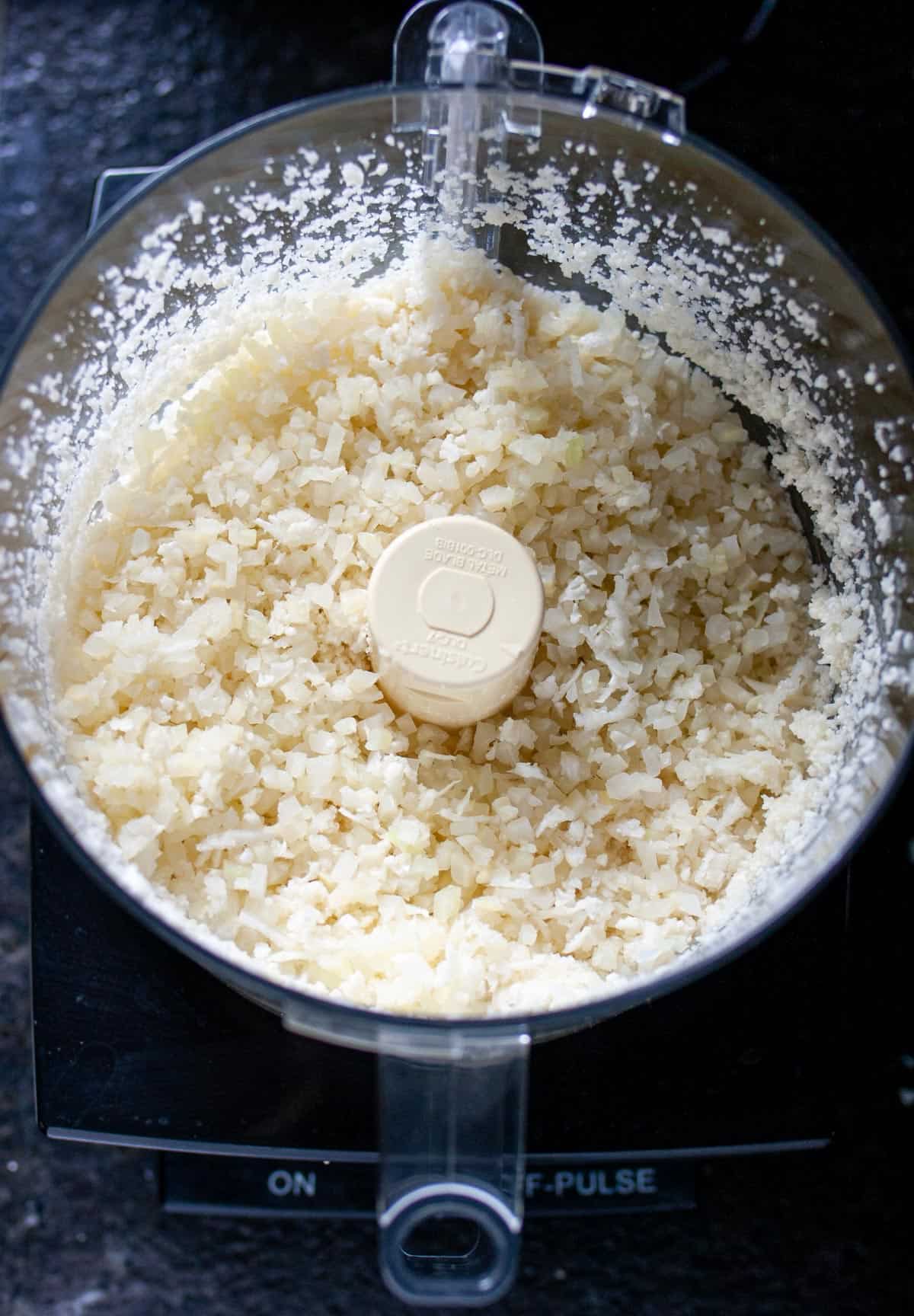
Using the grater attachment
- Set up your food processor with the grater attachment
- Turn your food processor on and feed the prepared florets through the tube. Depending on the capacity of your food processor and the size of the head, you may have to empty the bowl a couple of times.
How to make cauliflower rice without a food processor
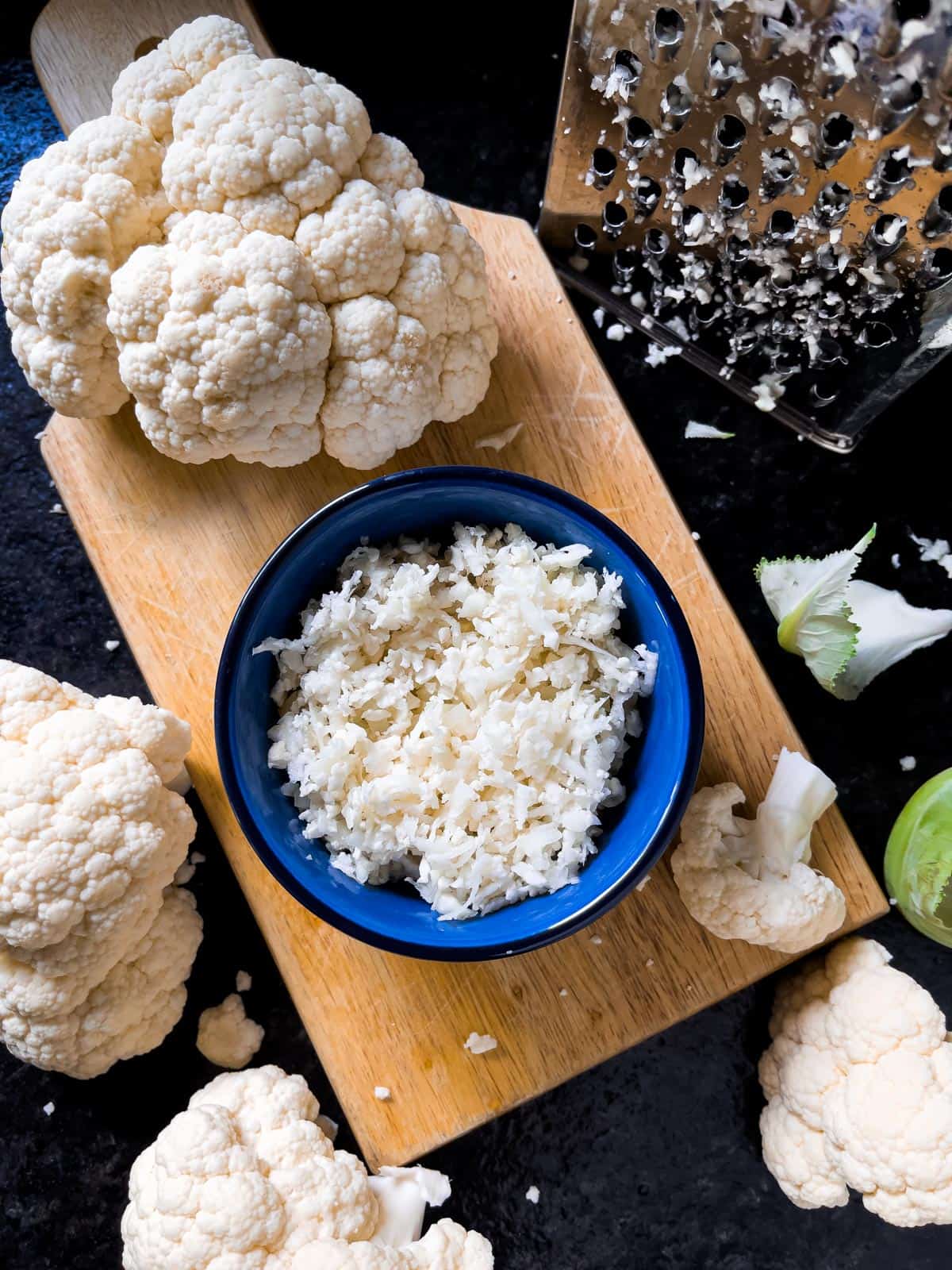
Using a hand grater
If you don’t have a food processor, using a box grater (or cheese grater), is fast and easy. Cut the cored head into medium-sized pieces and grate on the side with the large sized holes.
Using a blender
There are two methods for blending: with and without water. While using a food processor is my preferred method, blending is very effective.
Processing with water can help the florets move around evenly, provide a consistent texture and prevent the blender blades from clogging. However, the 'rice' will retain some moisture that will need to be squeezed out after blending.
Without water
- Add about 2 cups of prepared florets to a high-speed blender. Pulse until small pieces are formed, then dump into a bowl.
- Working in batches, add the rest (about 2 cups at a time) to the blender and process
With water
- Add 2-3 cups of prepared florets to the blender
- Pour in just enough water to immerse the florets
- Pulse until they resemble grains of rice floating in the water
- Strain to remove as much water as possible and repeat with remaining florets
- Remove extra moisture by squeezing the 'rice' with a paper towel after blending
Using a knife
Using a large chef's knife, chop the prepared florets into tiny pieces. Even though this process may take a little longer than with a food processor or hand grater, it’s very simple to do, using minimal utensils.
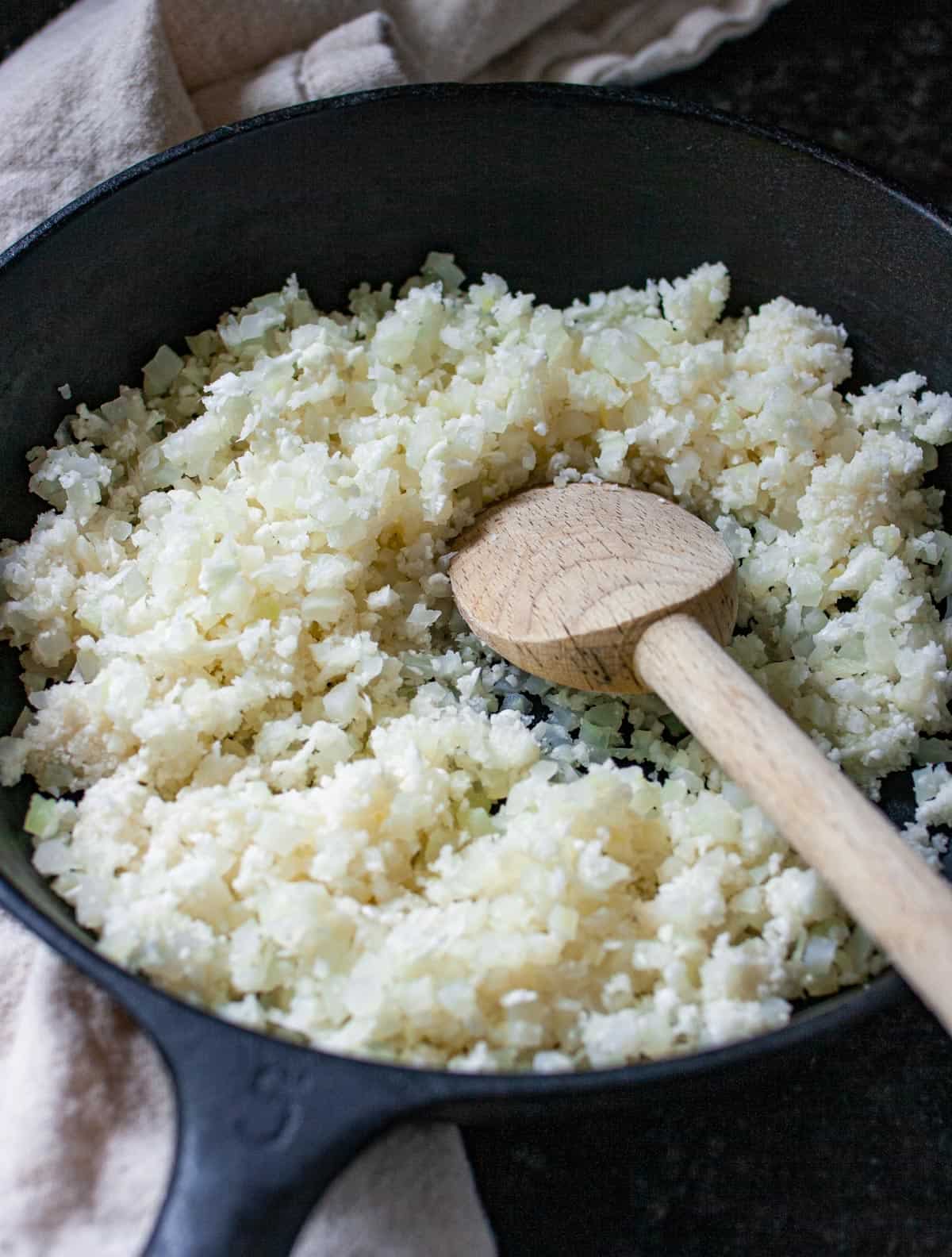
How to cook from fresh
The best way to cook freshly made 'rice' is on the stove. If you’re going to make a casserole, the cauli rice should be gently cooked before adding it to the casserole dish to keep it from becoming too watery.
- Heat a generous amount of oil in a skillet (just enough to lightly cover the bottom) over medium heat
- Add the 'rice' and any seasonings
- Stir fry until tender
How long to cook
Cooking time will vary, depending on the size of your ‘grains’ and whether you’re cooking from fresh or frozen.
Preparing from fresh takes only about 5 minutes on medium heat.
Heating from frozen will take an extra few minutes to thaw and evaporate all of the retained water.
TIP: Cooking time will vary depending on your personal taste. For al dente rice, sautéing for 3-5 minutes should be just enough. If overcooked, it can be on the mushy or sticky side. If you’re going for sticky rice texture, cook for an additional couple of minutes or consider adding a couple tablespoons of water or homemade bone broth.
How long does cauliflower rice last in the fridge?
When freshly riced and raw, it will last about 3 days in the refrigerator. If it’s cooked, it will last about 4 days.
Can you freeze it?
Yes, it can be frozen, but the texture will often change a bit once thawed, depending on the size of your 'grains'. You can freeze it raw, blanched or sautéed.
How to freeze
Freezing from raw
As a fast, easy 'all-purpose' method for freezing, place in an airtight container or freezer bag and freeze up to 4 months.
Blanching
If you want to have pre-cooked 'rice' to use in recipes, I recommend this method:
- Submerge your 'grains' in boiling water for about 30 seconds
- Transfer to an ice bath to stop the cooking process
- Drain and pat dry with a towel
- Freeze in a freezer bag or airtight container for up to 4 months
Sautéing
- Sauté in oil for about 3 minutes
- Let cool and store in an airtight container for up to 4 months
TIP: For best results, spread the 'grains' out on a sheet pan. When frozen, place in a freezer bag or airtight container.
How to cook frozen cauliflower rice
The best way to prepare it from frozen is to add the rice to an oiled skillet while still frozen or partially frozen. If thawed completely before sautéing, it may become a little too soft. However, if you need to cook it after it's been completely thawed, turn up the heat just a little bit, to medium-high to get just a little crisp edge.
Keep in mind that the ‘mushiness’ will vary depending on the size of the 'grains'. Cooking from frozen is usually the best option, but not always necessary.
Variations
This basic recipe is your ticket to simple, weeknight meals. While I enjoy it sautéed with simple kala namak salt and pepper, here are some of my favorite suggestions for how to season riced cauliflower:
- Cilantro lime – add 1-2 tablespoons of lime juice, some lime zest and chopped cilantro. Or, mix in some Cilantro Lime Salad Dressing or Mexican Chimicurri. Perfect for keto Mexican dishes!
- Pesto rice – stir in a tablespoon or two of Homemade Basil Pesto before serving
- Onion and garlic – add some finely chopped onion and/or garlic when sautéing.
- Add masala – add a sprinkle of Tikka Masala Powder, or stir in some homemade Tikka Masala Paste and try cooking with ghee instead of olive oil
- Asian inspired – sauté in toasted sesame oil and add some chopped green onions, slivered almonds or sesame seeds
- Mediterranean inspired – season with homemade Mediterranean Seasoning, and serve as a base under this amazing Mediterranean Stir Fry with Ground Chicken
- Make it cheesy – sauté, turn off the heat, add shredded cheese and cover until melty and gooey
- Coconut cauliflower rice – add a tablespoon or two of coconut milk or coconut cream
- Garlic and herb cauliflower couscous – sauté a couple garlic cloves in the oil and add fresh chopped herbs such as basil, parsley, chives or cilantro just before serving
Homemade spice blends to make great seasoned cauliflower rice
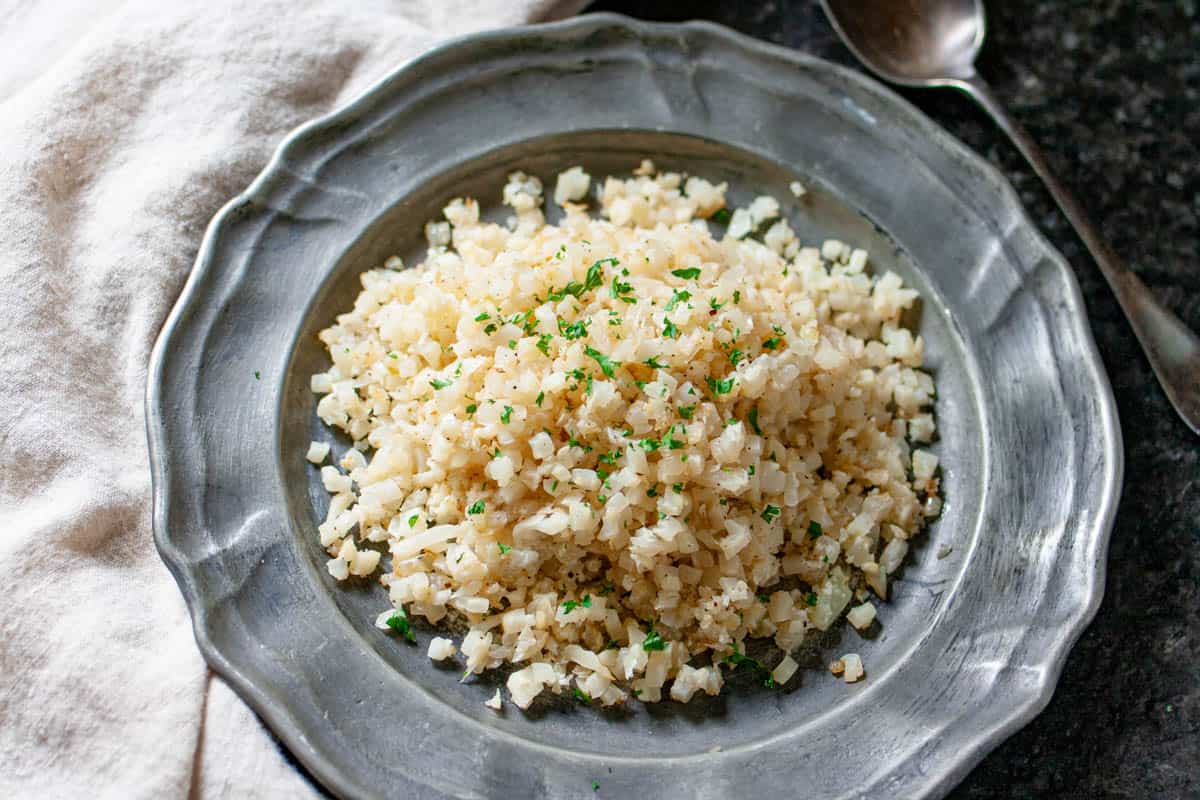
FAQ
Yes, in my opinion. It absorbs the flavors it’s cooked with and is delicious if cooked from fresh or frozen. But, if I had to choose, I would opt for fresh.
Making your own is so much less expensive than buying it pre-riced from the store. You will most likely pay twice as much per ounce for a ready-made product.
It depends. For simple, sautéed or a cauliflower rice stir fry, do not cover it. For dishes that could benefit from steamed cauli rice like risotto, cover it while cooking.
No – I don't recommend adding water while sautéing. It may be overdone and too soft. However, doneness varies with individual taste.
Yes, you can. Lightly cooking will enhance its digestibility, but eating it raw provides the most antioxidants per serving. However, cooking yields a better texture and flavor.
Recipes to serve with riced cauliflower
This recipe pairs terrifically with shrimp, spiced salmon, chicken, tofu, tempeh or any of these delicious recipes:
Did you make this recipe? Let me know how you liked it by giving a star rating and leaving a comment!
📖 Recipe
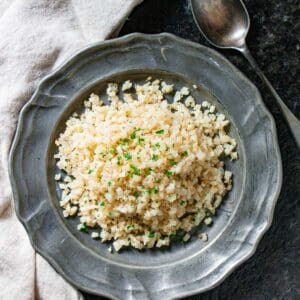
How to make Homemade Cauliflower Rice (4 ways)
Ingredients
To make the riced cauliflower
- 1 head cauliflower
- water (optional for using the blender method)
Easy cauliflower rice recipe
- 4 cups riced cauliflower (about 1 medium head, riced - see below for preparation methods)
- 2 tablespoons olive oil
- 1 teaspoon sea salt (or kala namak black salt - read about Kala Namak)
- ¼ teaspoon black pepper (or adjust to taste. Omit for AIP)
Instructions
Prepare the head of cauliflower
- Wash and trim the head, trimming off any brown spots from the florets.
- Cut the head in half and remove the woody center. You can also cut the head into quarters and then cut out the center.
- Cut the large florets into smaller pieces if you're using a food processor, blender or are cutting by hand. Otherwise, leave them in larger pieces if grating.
Food processor method
- If using the S blade, place the florets in the food processor and pulse until they're chopped into fine pieces. It may be better to work in batches to produce more uniform 'grains'.
- If using the grater attachment, turn on the food processor and feed the florets through the tube. Depending on the capacity of the processor and size of your head, you may need to empty the bowl a couple times.
Using a box grater or cheese grater
- Cut the florets into large or medium-sized pieces and grate on the side with the large-sized holes.
Using a blender
- Without water: working in batches, add about 2 cups of florets to the blender and pulse until small pieces are formed.
- With water: add 2-3 cups of florets to the blender and pour in just enough water to immerse them. Pulse until they resemble grains of rice, then strain. Remove extra moisture by squeezing the 'rice' with a paper towel after blending.
Using a knife
- Using a large chef's knife, chop the prepared florets into tiny pieces.
Easy cauliflower rice recipe
- Process a head of cauliflower using a food processor, box grater, chef's knife or use pre-made or frozen riced cauliflower
- Heat the olive oil in a large skillet.
- Add the riced cauliflower, salt and pepper (if using).
- Sauté for about 5 minutes, uncovered, until soft (if using frozen cauliflower, add a few more minutes).
- Adjust salt and pepper to taste.
Notes
Nutrition
*Net carbs = carbohydrates - fiber
Nutritional information is an estimate, calculated using online tools and does not include optional ingredients unless otherwise indicated.

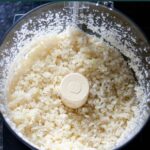
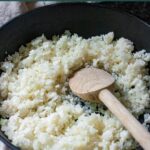
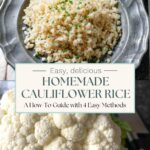

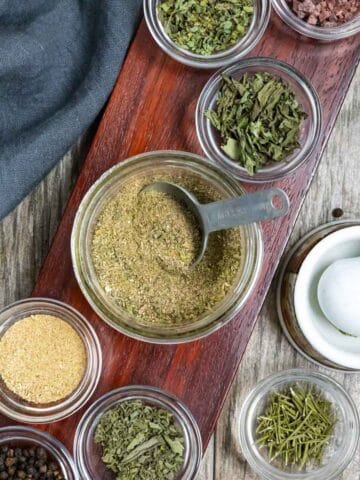
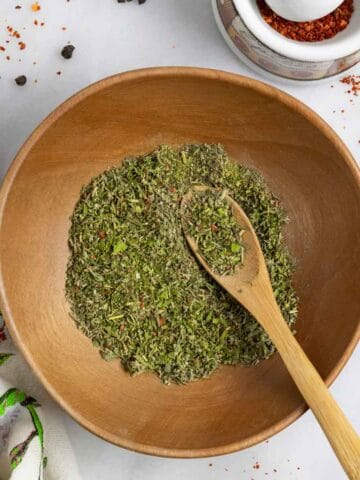


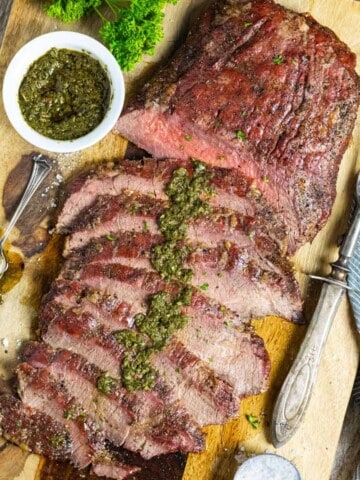

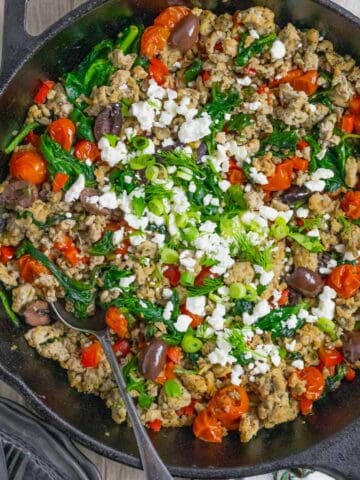
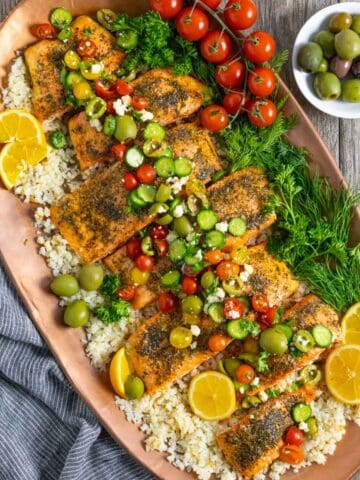
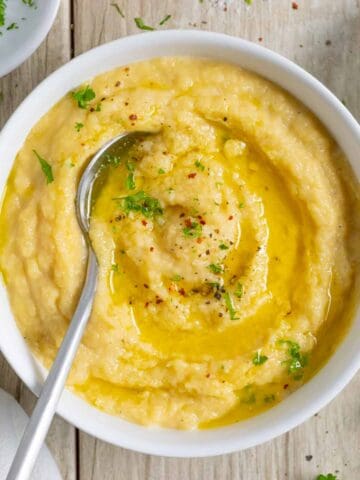
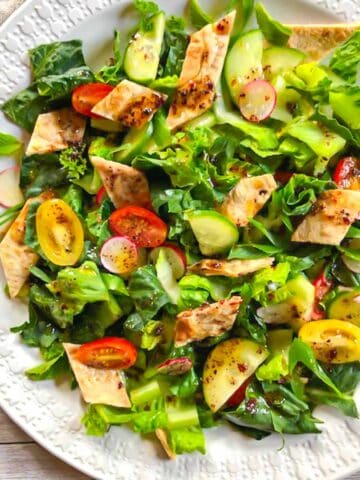
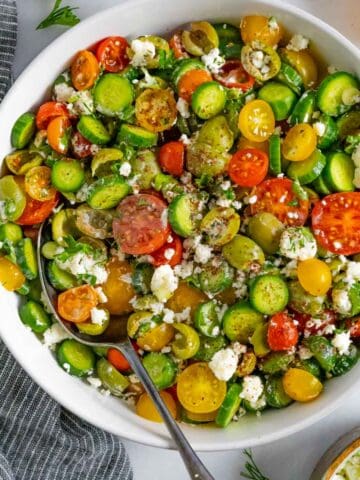

Comments
No Comments